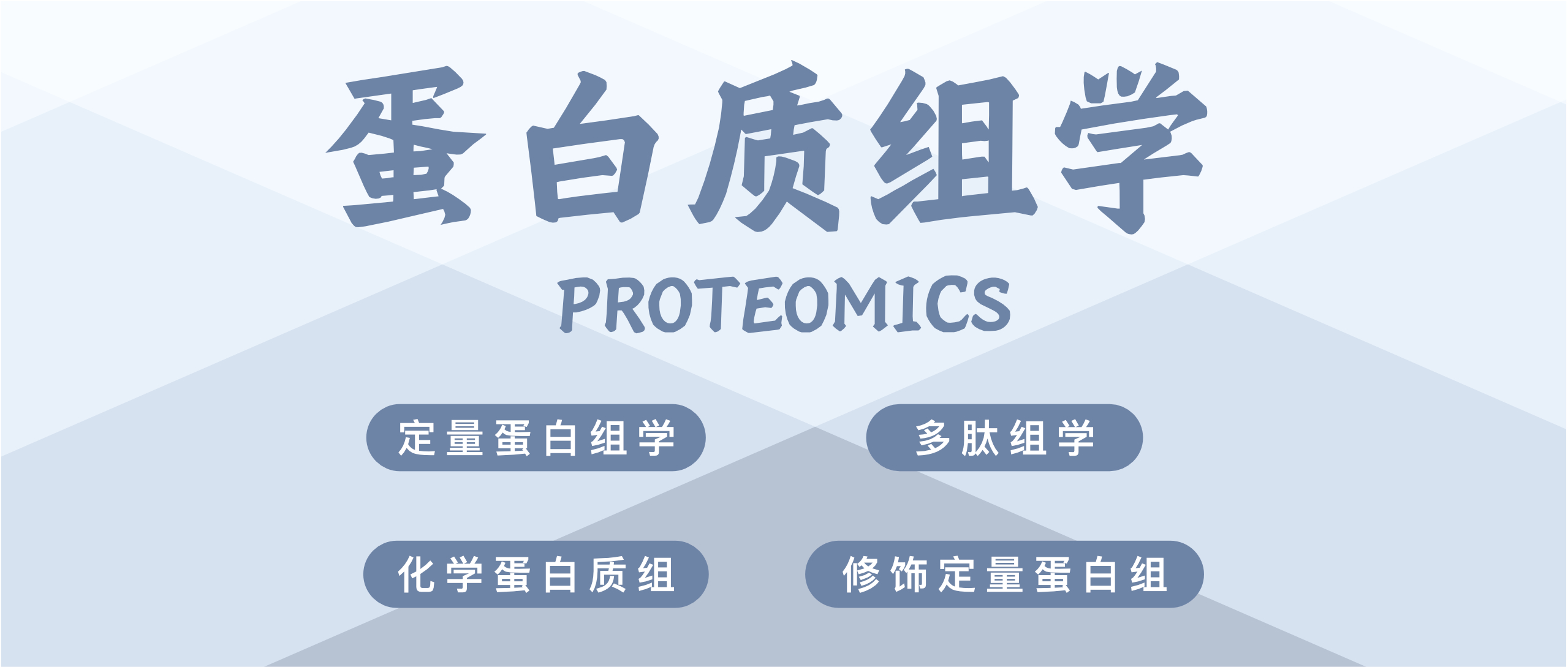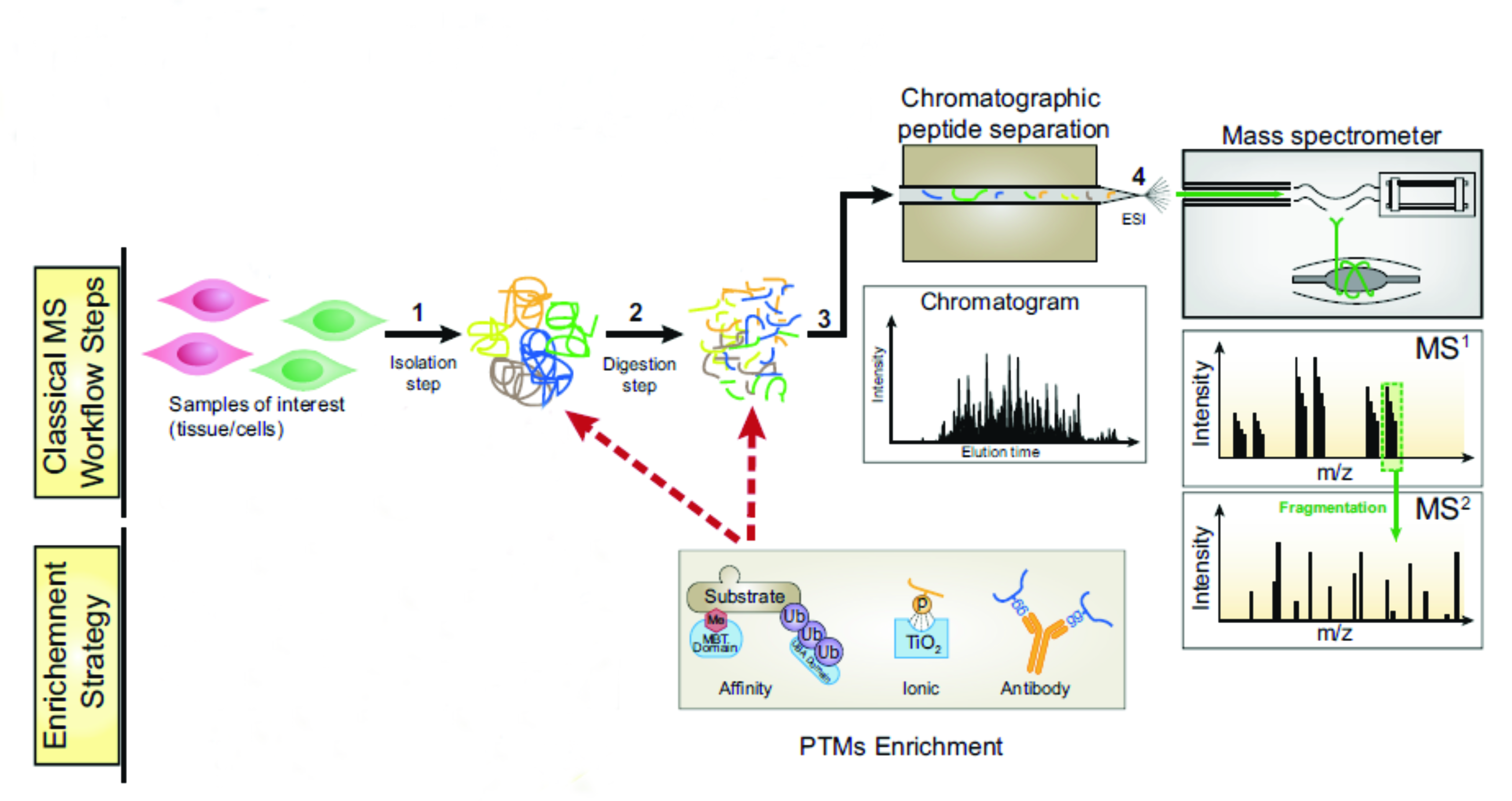Proteomics Service Product Introduction

Biotech Pack Biotechnology specializes in proteomics testing, rapidly obtaining in-depth data to drive research breakthroughs!
Service Content
I. Quantitative Proteomics
Proteomics is the study of the composition and regulation of proteins at the overall level. It analyzes the composition (qualitative), expression level (quantitative), and modification state (modification) of proteins to understand interactions and connections between proteins. This provides information on changes in biological processes such as diseases and metabolism at the protein level.

Quantitative Proteomics Technology Workflow
1. Label Free Quantitative Proteomics
A mass spectrometry-based label-free quantitative proteomics method is used for qualitative and relative quantitative analysis of proteins in samples. Unlike traditional labeling techniques, Label-free technology does not require chemical labeling of protein samples, making it simpler and more flexible.
2. DIA Quantitative Proteomics
DIA divides the entire mass spectrometry scan mass range into several small windows, sequentially fragmenting all ions in each window. Therefore, DIA can quantitatively measure almost all detectable molecules in complex samples, addressing the issue in DDA methods where low-abundance proteins are suppressed and undetectable.
3. Micro Proteomics
Using special treatment with minimal peptide/protein loss combined with high-sensitivity and low ion loss rate mass spectrometry analysis methods, normal data analysis of micro samples is achieved.
4. 4D Quantitative Proteomics
Conventional mass spectrometry data includes three-dimensional information: retention time, mass-to-charge ratio, and ion intensity. On this basis, 4D adds collision cross-section (CCS) or ion mobility results. In hardware, ion mobility increases the separation of ionized peptides, achieving ion accumulation and focusing, which can improve identification depth and sensitivity. In data, adding CCS information also improves the reliability of identification results.
5. TMT Quantitative Proteomics
TMT technology uses multiple stable isotope tags to specifically label the amino groups of peptides for tandem mass spectrometry analysis, enabling the analysis of protein relative content differences in up to 18 different samples simultaneously. Because the same peptide segments with different tags enter mass spectrometry analysis simultaneously, it has excellent quantitative accuracy.
6. PRM Target Protein Relative/Absolute Quantification
The PRM (Parallel Reaction Monitoring) method selects and detects signals related to target proteins by collecting high-resolution MS2 mass spectra of target peptides, excluding interference from other ions. It can achieve highly specific and accurate quantification of target proteins, and with the help of synthetic standard peptides, absolute quantification can be achieved.
7. Macro Proteomics
Identifies proteins from all bacteria in the sample, typically requiring metagenomic results or species information of the main bacteria.
II. Modified Quantitative Proteomics
Post-translational modification (PTM) refers to covalent processing of proteins after translation, altering the physicochemical properties of proteins by adding modification groups to one or more amino acid residues, affecting protein conformation, activity state, and subcellular localization. Because modified proteins have low abundance and a wide dynamic range in samples, enrichment of modified proteins or peptides is required before mass spectrometry identification.

Mass Spectrometry-based Modified Proteomics Workflow
1. Phosphorylation Quantitative Proteomics
Common modification sites: Ser/Thr/Tyr
Related application areas: signal transduction, cell cycle, regulatory mechanisms, stress resistance, growth and development, and cancer mechanisms.
2. Disulfide Bond Proteomics
Common modification sites: Cys
Related application areas: protein structural stability, protein activity, biopharmaceutical design, pharmacodynamics, and safety evaluation.
3. SUMOylation Quantitative Proteomics
Common modification sites: Lys
Related application areas: embryonic development, cardiac and craniofacial development, plant immune response, DNA damage repair, tumor drug resistance, etc.
4. Methylation Quantitative Proteomics
Common modification sites: Arg/Lys
Related application areas: epigenetics, cancer mechanisms, aging, neurodegenerative diseases, protein translocation and signal transduction, histone function.
5. Acetylation Quantitative Proteomics
Common modification sites: Lys
Related application areas: gene expression regulation, cell defense mechanisms, apoptosis and metabolism, cell cycle, transcription activation and silencing, protein stability, neurodegenerative diseases, etc.
6. Glycosylation Quantitative Proteomics
Common modification sites: Asn(N), Ser/Thr(O)
Related application areas: cell recognition, differentiation, stress response, signal transduction, immune response, neurodegenerative diseases, metabolic diseases, and infectious disease research.
7. Lactylation Quantitative Proteomics
Common modification sites: Lys
Related application areas: glycolysis-related cell functions, macrophage polarization, nervous system regulation, tumorigenesis, sepsis and immune disease development, and rice grain development in important life activities.
8. Ubiquitination Quantitative Proteomics
Common modification sites: Lys
Related application areas: cell cycle, apoptosis, protein degradation, defense mechanisms, photomorphogenesis, signal transduction, plant growth and development, cancer, and neurodegenerative diseases.
III. Chemical Proteomics
The key to modern drug research and development is first to find and determine molecular drug targets. To make drugs bind to target proteins, target protein screening is needed first, followed by potential site screening, and finally site verification.
Common methods include Drug Affinity Responsive Target Stability (DARTS), Limited Proteolysis Mass Spectrometry (Lip-MS).

IV. Peptidomics
Peptidomics refers to the qualitative and quantitative study of endogenous peptides consisting of 2 to 50 amino acids (0.2 to 10 kDa). Peptides exist in cells and biological fluids, with specific physiological and biological functions, such as vasodilation and oxidative stress. Therefore, changes in specific peptides or peptide expression patterns can serve as potential biomarkers for normal physiological or disease-specific pathological processes or therapeutic interventions. Conventional peptidomics involves extracting samples, collecting peptides smaller than 10 kDa, and performing mass spectrometry analysis.

Peptidomics Workflow
Bioactive Peptidomics
Biologically active peptides are protein fragments containing 2-20 amino acid residues linked by peptide bonds, with positive biological effects. Biotech Pack uses machine learning methods to construct different activity models (antioxidant, antibacterial, blood pressure-lowering, blood sugar-lowering, anti-inflammatory, allergenic, potential toxicity, umami peptides, and bitter peptides) for prediction and provides molecular docking services.

About Us
Beijing Biotech Pack Scientific Co., Ltd. (abbreviated as BTP) is engaged in multi-omics testing and bioproduct characterization services based on biological mass spectrometry.
1. The company adopts the ISO9001 quality control system and is recognized by the national CNAS laboratory, providing testing services that meet global pharmaceutical regulatory standards.
2. Business scope covers proteomics, peptidomics, metabolomics, transcriptomics, microbiomics, biopharmaceutical characterization, single-cell analysis, bioinformatics cloud analysis, and multi-omics integration analysis. Seven quality control testing platforms meet your one-stop service needs.
3. Serving over 3,000 universities, research institutes, hospitals, and enterprises, with over 10,000 customers' choice! Committed to providing you with high-quality biological mass spectrometry analysis services!

Biotech Pack, based on CNAS and ISO9001 dual certification laboratories, rigorously controls each experimental step, building an excellent platform for protein analysis. Achieving accurate qualitative and quantitative standardized mass spectrometry detection innovation, broadening the exploration path of molecular phenomics, allowing protein detection results to enter the era of high accuracy, high precision, and high reproducibility of excellent data.
Contact Information
Phone: 010-67869385
Website: www.biotech-pack.com
Email: info@biotech-pack.com
Address: No. 2 Kechuang Sixth Street, Beijing Economic and Technological Development Zone, Beijing
How to order?





